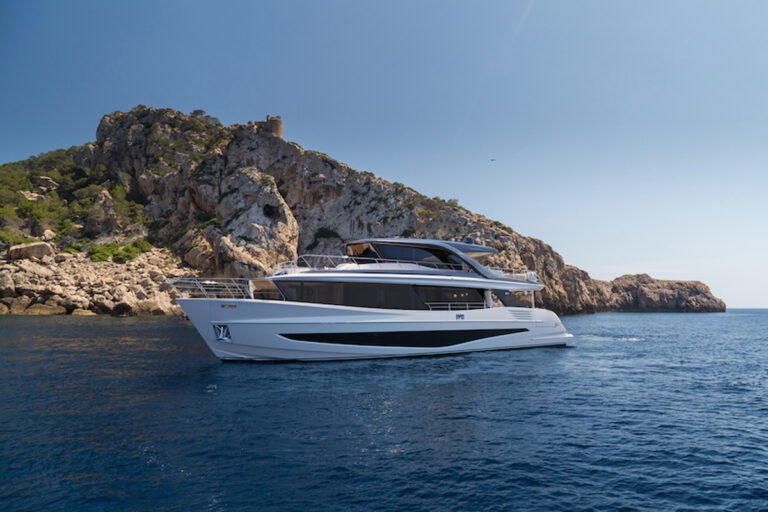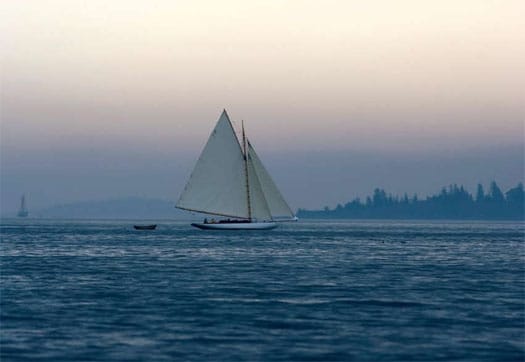
ytgjan09buzzards525.jpg
Belfast, Maine, at the mouth of the Passagassawakeag River on the north shore of Penobscot Bay, often spends the mornings wrapped in a blanket of fog. On Sunday, June 22, the fog floated northwesterly up the harbor and retreated southeasterly on the whims of the midmorning breezes created by the difference in temperature of the warming landmass and the ever-cold water of the bay. Forecasters had warned the 6,000-plus residents of this town to expect thunderstorms later in the day, but anyone who witnessed the gathering crowd, trickling like runoff from a recent rain down the steep streets leading to the harbor, had to assume that no one believed the forecast or didn’t care if they got wet. This was a red-letter day in the town’s life-the launching of three Buzzards Bay 30s, restored by the skillful craftsmen at French & Webb.
Launchings are a big deal in these parts, even when the boats aren’t celebrities, because the coast of Maine lives on its relationship with the sea. So, imagine the thrill of seeing this trio of racer/cruisers, designed by Nathanael Herreshoff in 1901 and built by the Herreshoff Manufacturing Company during the winter of 1901-1902, simultaneously return to their natural environment. Lady M, Quakeress II, Young Miss-these svelte athletes were born more than a century ago, when Beverly (Masssachusetts) Yacht Club members asked for a onedesign class that could serve as a spirited racing yacht and a minimal cruiser. Now, they rested on their poppet stands, colorful flags snapping from the standing rigging in the gentle breeze.
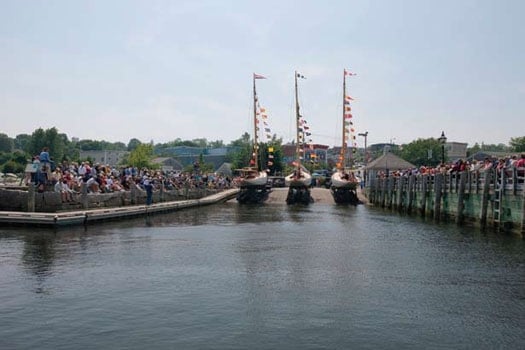
| | |
The launch of any finely restored antique yacht is cause for rejoicing, and anything from Herreshoff’s drawing board and yard puts enthusiasts over the top. No wonder-he earned the moniker “Wizard of Bristol” for designing yachts and small boats that were always fast and beautiful-and rules be damned!
Herreshoff drew the Buzzards Bay 30 to the Seawanahaka Rule, which balanced waterline length with sail area. A short static waterline allowed a boat to carry more sail area than a boat with a longer waterline, and clever designers were able to “cheat” the rule by drawing a hull that gained sailing length as it heeled. These early rules produced some silly boats, as have some of the rules that governed racing much later in the century. Though lovely to see when they are at rest or making knots under a fresh breeze, the BB 30s and boats of similar design have impossibly short waterlines, dangerously low freeboard for sailing offshore, difficult rigs, and minimal accommodations.
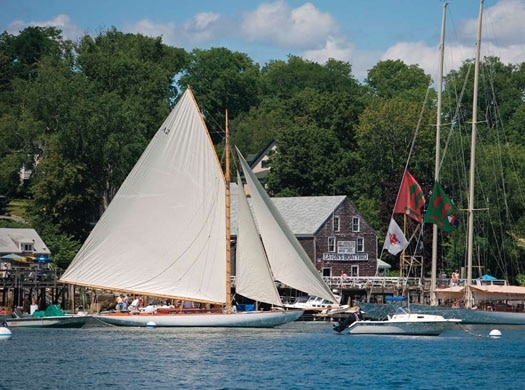
| | |
Buzzards Bay 30s measure 46.5 feet LOA (excluding the bowsprit), 30 feet LWL and 10 feet, 10 inches across the beam. A long and shallow keel and centerboard provide the lateral resistance. A total sail area of 1,400 square feet, spread over a highly peaked gaff mainsail and a pair of headsails, drive the boats to their max. Like the rig of many racing boats from this period, the boom of each BB 30 extends about eight feet beyond the transom and is a formidable spar. The weight of this boom and the 900 square feet of mainsail require a six-part mainsheet. Lazy jacks mind the sail as the crew lowers it, and running backstays keep the rig in the boat when the wind taxes the standing rigging. By today’s standards, the rudder is ludicrously small, and it struggles to keep the yacht from rounding up in the gusts. Weather helm is the order of the day. Belowdecks, we find two quarter berths and two pilot berths- these above and outboard of the settees-for the owner and his guests, and a pipe berth in the forepeak for the paid crew. The minimal galley lies to starboard of the mast; the enclosed head is opposite.
None of the shortcomings of the BB 30s, however, should prevent us from loving them and wanting to preserve the class for the pleasure of 21st century yachtsmen. These yachts were the state of the art of design for the period. Construction, too, was high-tech for 1902. Herreshoff built them as light as could be, employing a single layer of planking in the bottom, two layers in the topsides, oak backbone and frames, a single layer of pine planking in the deck, all tied together with bronze strapping placed diagonally. Displacement is approximately 20,000 pounds.
Twists, turns, and serendipity tell the story of these BB 30s. Young Miss appeared in the classified section of WoodenBoat magazine in 2004. She lived in Florida and still sailed. Quakeress II, having been christened Catspaw later in the century, spent time on the hard in Norwalk, Connecticut, then in Brunswick, Maine, and eventually found caring shelter at the Yacht Restoration School in Newport, Rhode Island. With the help of Maynard Bray, technical editor of WoodenBoat, an American yachtsman living abroad, and his partner, bought these two yachts for their own use and also bought Evelyn (christened Lady M after her restoration), which they’d found in Oxford, Maryland. The partners planned only to restore two of these yachts, so Bray wrote about Evelyn in the magazine’s “Save a Classic” column. A third yachtsman, who was willing to restore the yacht to the exacting standards set by the partners, bought her. A fourth BB 30, Anita, also bought by the original partners, awaits a buyer and restoration at French & Webb.
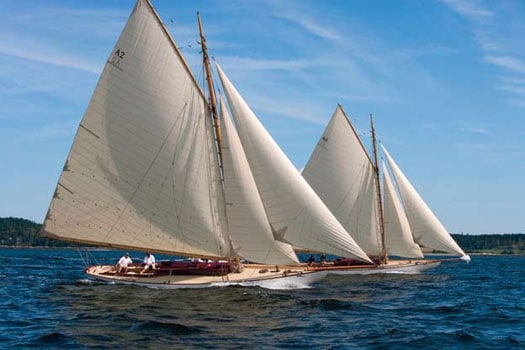
| | |
French & Webb retained as much of the original wood as was humanly possible, so that each boat would qualify as a restoration instead of a replication. All of the fixed hardware, blocks, and winches are exact reproductions of Herreshoff’s original designs.
By early afternoon, this trio of lovely yachts rode their trailers into the waters of Belfast Harbor. Cheers from the crowd burst above the roar of the transport trucks’ diesel engines, and a hearty round of applause from what seemed like half the town greeted each boat as it touched keel to water. These grand dames of one-design racing remained in New England for the series of classic yacht regattas staged every autumn. After that, each returned to its permanent home, wherever that may be. Although the owners wish to remain anonymous, we owe them our thanks for their service in preserving these important and historic maritime antiquities.







